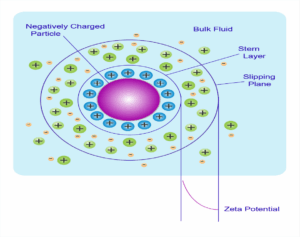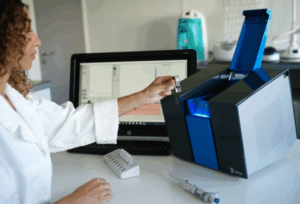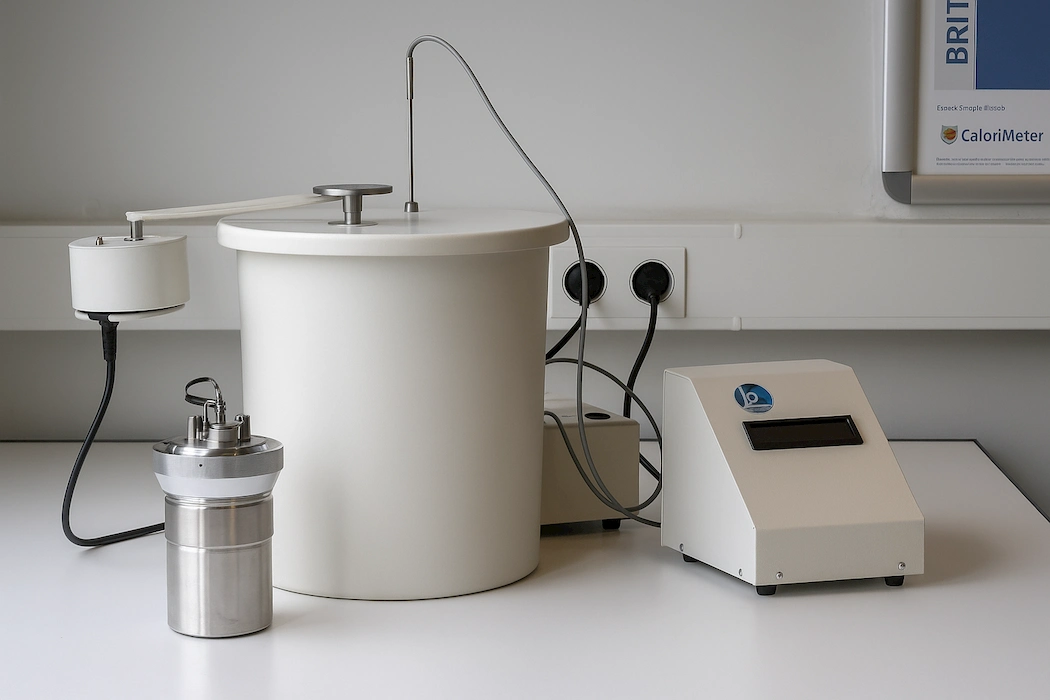Introduction: The Invisible World Matters
In modern chemistry research, understanding the behavior of particles in suspension is critical to developing advanced materials, pharmaceuticals, nanotechnologies, and chemical formulations. One of the essential tools facilitating this understanding is the Particle Size and Zeta Potential Analyzer. These instruments are indispensable in analyzing the physical stability, formulation performance, and overall behavior of colloidal systems and suspensions.
Step into any modern chemistry research laboratory, and amidst the glassware and spectrometers, you’ll likely find a crucial workhorse quietly humming away: the Particle Size and Zeta Potential Analyzer. This sophisticated instrument doesn’t just look at chemicals; it peers into them, revealing the hidden world of particles and their surface dimensions and properties critical to countless chemical processes. If you’re working with anything from nanoparticles to proteins, polymers to pigments, understanding size and surface charge isn’t just helpful; it’s fundamental.
This blog explores the key uses and applications of particle size and zeta potential analysis in chemistry research laboratories.
How to define Particle Size and Zeta Potential Analyzer?
A Particle Size Analyzer measures the distribution of particle sizes in a sample, typically ranging from nanometers to micrometers. The Zeta Potential Analyzer, on the other hand, determines the electrical potential at the slipping plane of particles in a colloidal system, often referred to as zeta potential. This parameter provides insights into the stability and surface charge of dispersed particles.
Many modern Analytical instruments combine both measurements, offering a comprehensive profile of particles in liquid suspensions.


Key Applications in Chemistry Research Laboratories
- Nanomaterials Research
Nanoparticles have unique properties based on their size and surface charge.
Synthesis optimization of metal nanoparticles, quantum dots, or carbon-based nanomaterials.
- Evaluating colloidal stability, which affects aggregation, sedimentation, and reactivity.
- Ensuring reproducibility in nanoparticle production for drug delivery or catalytic applications.
- Pharmaceutical Formulation
In pharmaceutical chemistry, suspensions, emulsions, and liposomes are common delivery forms. Zeta potential and particle size analysis assist in:
- Designing stable formulations by identifying optimal surfactants or stabilizers.
- Predicting shelf-life and preventing flocculation or aggregation.
- Ensuring bioavailability of drug-loaded particles through size control.
- Colloidal Chemistry and Surface Science
Chemists often study the behavior of particles in various media. These measurements help:
- Understand electrostatic interactions in colloids and emulsions.
- Study adsorption phenomena, particularly in functionalized surfaces or coated particles.
- Explore charge reversal and ion binding effects in surfactant or polyelectrolyte systems.
- Polymer and Material Science
Particle size analysis is crucial in developing advanced polymers, composites, and paints. Researchers use it to:
- Monitor polymer dispersion quality.
- Analyze microencapsulation efficiency.
- Investigate rheological behavior related to particle interactions.
- Environmental and Green Chemistry
Analyzers support research into eco-friendly formulations and pollution control by:
- Measuring contaminant particle sizes in wastewater or air.
- Studying flocculation behavior in water treatment.
- Developing green dispersants and eco-compatible materials.

Benefits in the Lab
- Non-destructive analysis: Requires minimal sample preparation.
- Rapid and repeatable: Delivers fast results with high reproducibility.
- Wide size range: Suitable for nano to micron-scale particles.
- Quantitative & Reproducible: Provides objective, numerical data essential for research publications, quality control, and regulatory filings.
Conclusion: Essential Tools for Modern Chemistry
The Particle Size and Zeta Potential Analyzer has become a cornerstone instrument in chemistry research laboratories. Its ability to provide critical insights into particle behavior makes it indispensable in developing new materials, optimizing formulations, and ensuring stability in complex systems.
As research pushes the boundaries of nanotechnology, materials science, and green chemistry, the role of this powerful analytical tool will only become more prominent.
The Particle Size and Zeta Potential Analyzer is far more than just another box in the lab. It provides fundamental insights into the physical and interfacial properties that govern the behavior of materials at the micro- and nanoscale. From designing life-saving drugs to creating advanced materials, optimizing industrial processes to understanding environmental interactions, these analyzers empower chemists to characterize, predict, and control systems where what you can’t see with the naked eye truly determines success. Investing in understanding size and surface charge is investing in the precision and predictability of your chemical research. If your work involves anything dispersed, dissolved, or colloidal, these instruments are likely your key to unlocking deeper understanding and achieving better results.
Looking to equip your lab?
When selecting an analyzer, consider factors such as size range, sensitivity, measurement principle (e.g., dynamic light scattering, electrophoretic light scattering), and compatibility with your sample types.
APEX INSTRUMENT (APEX GULF TRADING LLC) is the distributor for CORDOUAN TECHNOLOGIES, FRANCE in the UAE and GCC region.
Contact :
Email: sales@apex-instrument.com
Mobile/WhatsApp: +971526191767



